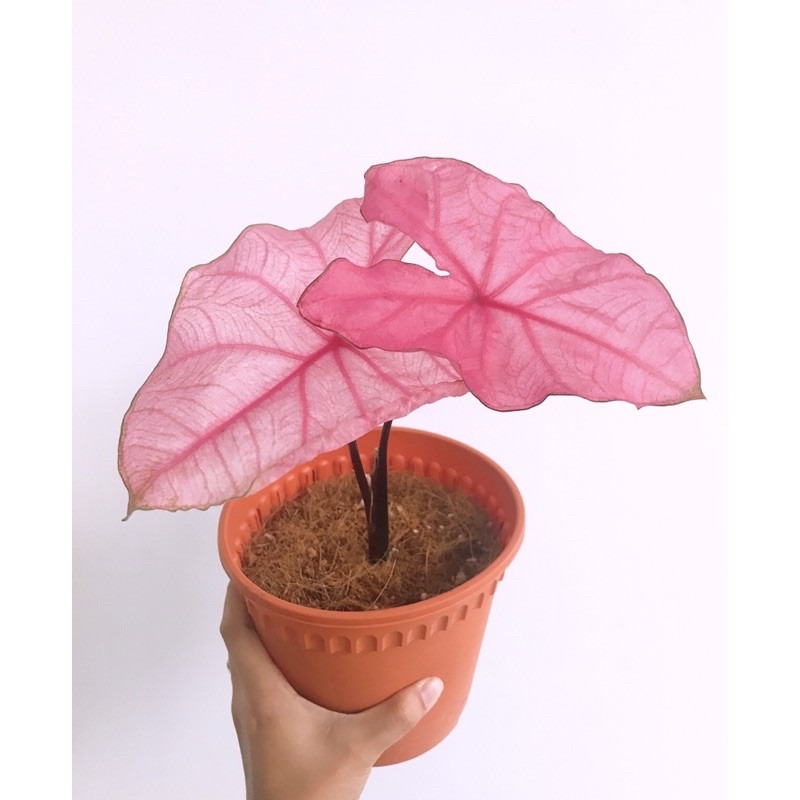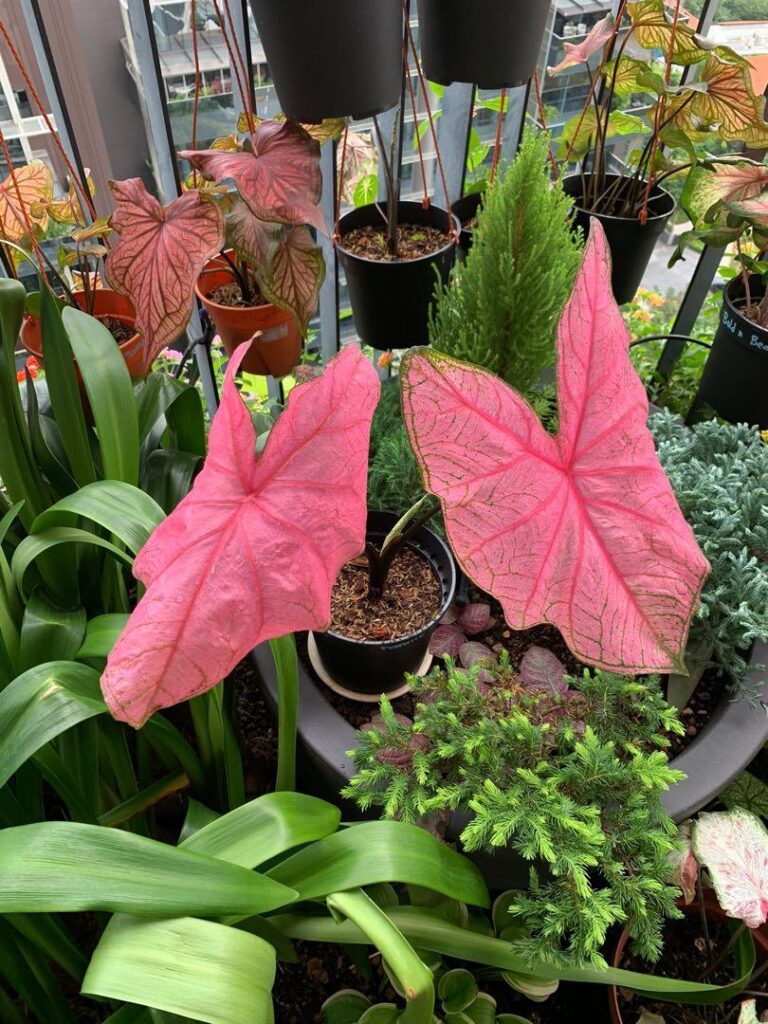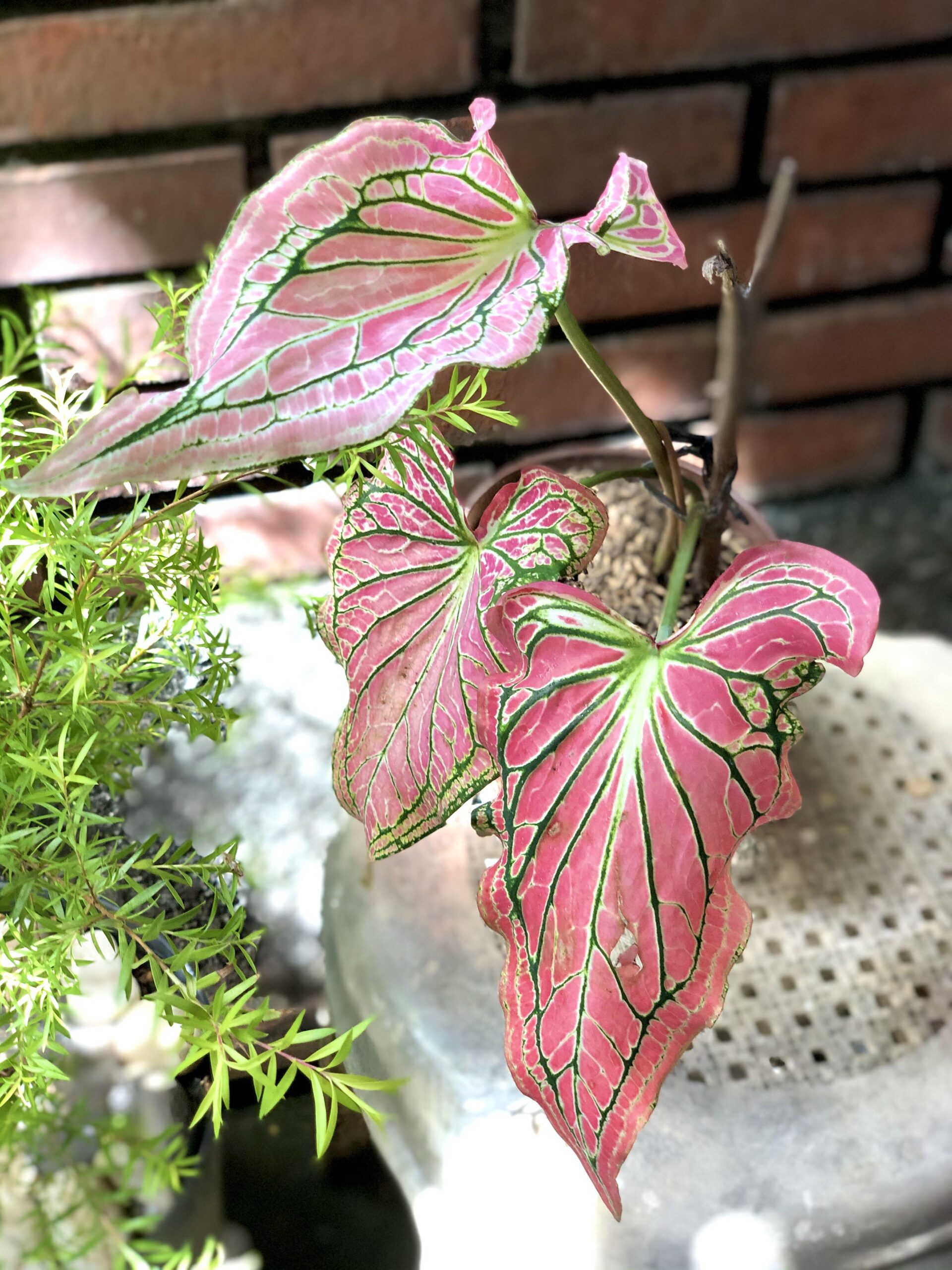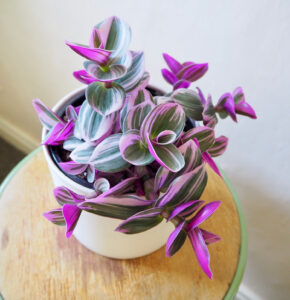Caladium Care Instructions.
Caladiums are tropical tubers and MUST be warm to flourish. It is critical to wait to plant your caladiums until your soil temperature is at or above 70 degrees Fahrenheit. Cool weather will significantly delay germination. See the recommended planting date for your area on the map to the left.

Planting Outdoor Caladiums
Planting Caladiums is very easy. Plant the top of the bulb 1 1/2 to 2 inches below the surface with the eyes up.

If the soil is sandy, mix in some peat moss to improve moisture retention.
Mulch around the planting and keep moist throughout the season.

Fertilize every six weeks with a 6-6-6 type fertilizer or slow release type fertilizer. Use about a teaspoon per bulb.

Caladiums thrive outdoors during the warmer months and add a lush, exotic touch to your yard or garden.
Most Caladiums are at home in the shade or partial shade, but some varieties are more sun tolerant and can be planted in areas with little shade.
They are a great way to add color to shady areas. Caladium is often used as border plants, alongside homes, or in beds. They may also be used in window boxes and make stunning patio container plants.
Storing Caladium Bulbs
In the fall when temperatures drop below 65 degrees, caladium bulbs will go dormant and remain throughout the winter.

In the North caladium bulbs should be dug before your first frost. Time permitting, the leaves should be allowed to dry up and fall off naturally. This allows the nutrients from the leaves to be absorbed back into the bulb enabling the bulb to bulk up for storage.
The leaves may also be removed by cutting them off close to the bulb, being careful not to cut into the bulb. Cuts or tears into the bulb increase the chance of fungus/rot/infection during storage.
After digging, your caladium bulbs should be allowed to dry for 10-14 days. This is best done by laying them out on a towel or newspaper and provide good warm ventilation. A gentle breeze or small fan combined with some sunlight or in a heated garage will firm and dry them up.
Caladium Care Instructions (Storage Tips)
Ideally, caladium bulbs should be stored in flats to ensure good ventilation. If space is limited, the bulbs may be placed in mesh bags or panty hose with peat moss as a separator.
Many folks just hang these bags in an unused closet or heated garage throughout the off season. Caladium bulbs should be stored in an area that maintains temperatures above 65 degrees.
Remember caladiums are the fullest and prettiest the first season and may decrease in size and foliage in the following years.
As foliage begins to die down in the fall, reduce water, dig up and air dry bulbs for a week. Store in a dry location at 55 degrees or above.
Storage only applies to zones 8 and below.
In the deep south, zones 9-11, it is not necessary to dig caladiums up during the winter months. However, they will still go dormant.
Caladium Care Instructions (Growing Caladiums Indoors)
Caladiums like humidity. While your plant is still in its foliar glory, you will need to keep it watered and happy. You should only fertilize the plant when it is actively growing during spring to late summer. In the fall and winter, no special food is necessary.

Water the soil when it is dry to the touch. Keep the plant in an area with temperatures of at least 65 degrees Fahrenheit.
When the leaves begin to die back, allow them to persist until fully spent and then cut them off. You can then either lift the bulbs, allow them to dry and store them in peat in a breathable bag or leave them in the soil and suspend watering.
Caladiums provide an impressive showing indoors, their vibrant hues adding warmth to any home. They are at home in pots and can be placed outside when summer arrives.
Caladiums as cut flowers will keep for 2-3 weeks and make a gorgeous display in a vase or floral arrangement.
Indoor Caladium plants require a medium light area with protection from midday sun, which will scorch the leaves. A northern or eastern window is usually the best exposure.
Humidity is crucial to Caladium houseplant care as the tubers are native to South American tropical forests and produce seasonal foliage during the rainy, warm season.


